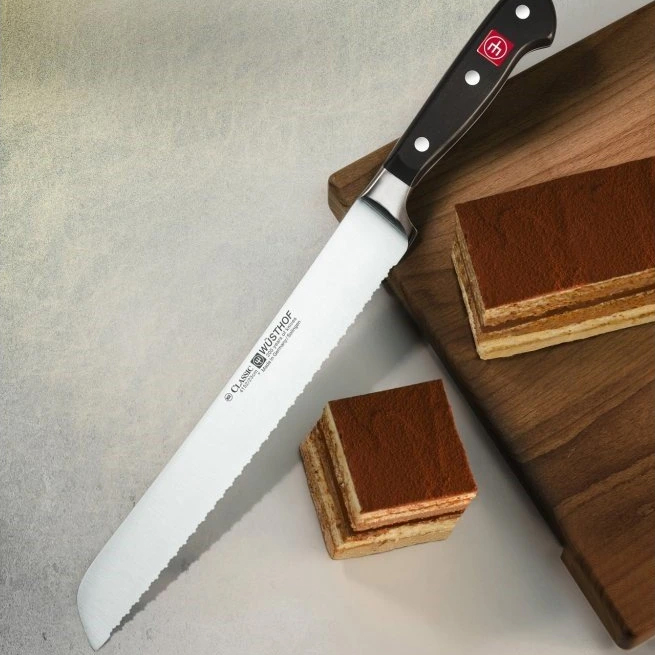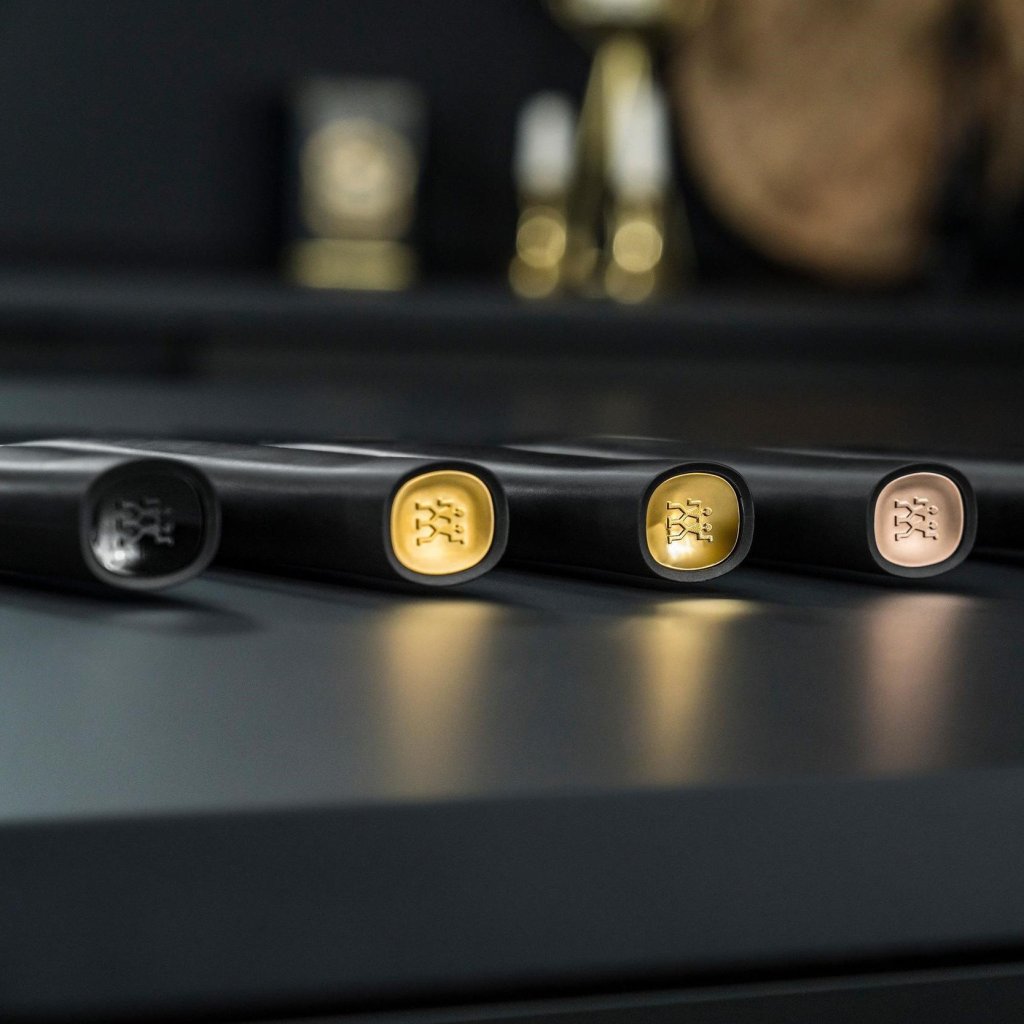Did you know that the foundation of every kitchen should be three knives? A large chef's knife for the big jobs, a small paring knife for small jobs and a serrated knife, the master of slicing crusty bread or baguettes - the pastry knife. Because only with it will you be able to penetrate the firm crust without deforming the soft crumb, and thus always reliably conjure up neat slices. We'll advise you on which parameters to use to find a pastry cutter that suits you.


Quality pastries are crispy on the outside and fluffy on the inside. When cut with an inappropriate knife, the structure of the pastry is damaged, the crumb crumbles, the shape changes and unsightly cuts appear. Pastry knife has been specially developed to cut both hard and soft parts with perfect results.
Favourite pastry knives

Pastry knife (not only)
It is a master at slicing bread or crispy baguettes, but thanks to its serrated blade, it can also perfectly slice juicy tomatoes, soft fruit or cakes and pies. In short, the pastry knife is a versatile tool that will be your helper more often than you might expect.

The blade of the pastry knife must be serrated. It is the serrations that allow the tool to pierce the crust without crushing the soft inner part. Shallow teeth are suitable for softer pastries, while deeper teeth are better suited to hard crusts.

This should be between 20 and 26 cm. This length makes it easy to cut large loaves, as well as baguettes or other smaller pastries.

The blade should be rather thin, but at the same time very strong. Flexibility is a disadvantage with pastry knives, as only sufficient strength will ensure maximum control over the cut.

Stainless steel is most often used for the production of bread knives, as it is sharp enough to resist corrosion. Damascus steel knives are also sometimes available, but it is important to remember that they are more difficult to maintain as they are more prone to rusting.

Pastry knives have a medium wide blade, which is usually straight with a round tip. Some tools taper slightly from the handle. Some pastry knives have a blade that is offset downwards from the handle. This is to prevent the knuckles from coming into contact with the cutting board when slicing.

The correct balance of the knife ensures easier handling and better control during slicing. This is known by the fact that the balance point of the knife (the bolster) is located at the point where the blade meets the handle, so that if you put your finger under this part of the knife, it will remain balanced.

The knife has to fit your hand. The ergonomic shape of the handle ensures safety and also reduces fatigue during prolonged handling. Different materials have their pros and cons - wood is aesthetic but can show signs of wear over time, metal is timeless but can slip when wet and also feel cold in the hand, and plastic or composite handles are durable, affordable but may not look elegant.

If you want your bread knife to stay sharp for a long time, give it some simple but important care from time to time:
- Washing
After each use, rinse the knife with warm water and a soft sponge. Avoid aggressive cleaners or abrasive sponges and avoid washing in the dishwasher. All of these methods can damage the knife and accelerate its wear. Dry the knife immediately after washing with a soft cloth to prevent corrosion. - Storage
Store your pastry knife in blocks, racks, rails, or in a case or drawer with a liner, in short, in a place where the blade cannot be damaged. Avoid storing knives loose in a kitchen drawer. - Grinding
A pastry knife does not need to be sharpened as often as a plain knife, as its teeth stay sharp for longer. However, normal use will dull any tool, even the best quality ones, so your bread knife needs to be sharpened once in a while. Use only tools designed for sharpening serrated knives or rely on professional sharpening. - Proper use
Use the knife only for pastry. Never use it to cut any other ingredients, especially hard ones such as gristle, bones, pumpkin, melon or frozen foods. These can damage the blade considerably. Always cut on a wooden or plastic cutting board; other materials dull the blade.
Quality dishwashing products



The most popular bread knife manufacturers
- Cleaning: rinse and dry the knife immediately after use. Avoid washing in the dishwasher.
- Storage: do not store the knife loose in a kitchen drawer, use knife blocks or knife rails.
- Slicing: only slice on a wooden or plastic cutting board.
- Grinding: Due to its serrated edge, you'd better rely on professional sharpening.
